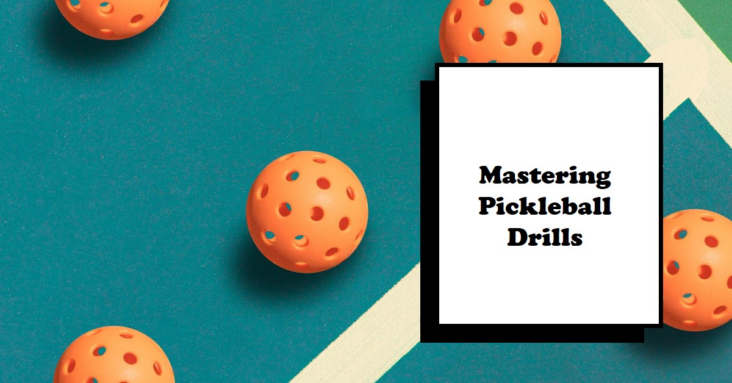The Crucial Role of Drilling in Pickleball Mastery
In the dynamic realm of pickleball, drilling has become a fundamental practice for players aiming to enhance their skills. Whether you’re a beginner looking to build a strong foundation or an experienced player seeking continuous improvement, dedicated practice is indispensable.
Join me on a journey to demystify the art of drilling, exploring why it is essential for skill development, the best drilling routines for different skill levels, and the balance between solo and partner-based practice.
The Impact of Drilling on Skill Development
Pickleball, a sport that requires a blend of strategy, coordination, and quick decision-making, thrives on consistent drilling. This systematic approach to skill enhancement allows players to break down the game’s complexities into manageable parts.
By dedicating time to perfecting serves, mastering volleys, refining dinks, and honing powerful smashes, you build a foundation for becoming a well-rounded and confident player. Targeted practice not only sharpens technical skills but also boosts self-assurance, enabling you to tackle the demands of the pickleball court with confidence.
Crafting an Effective Drilling Routine
An optimal drilling routine varies based on your skill level and growth aspirations. However, some guiding principles can help you navigate this journey effectively.
For beginners, a weekly drilling schedule of 3-4 hours, with each session focused on a specific skill, can help establish a solid foundation. Intermediate players can benefit from 4-6 hours of dedicated drilling per week, emphasizing advanced techniques and strategies.
Advanced players, in their pursuit of excellence, should aim for 6-8 hours of weekly drilling, focusing on high-level game plans and addressing specific areas for improvement. Consistency is key. Prioritizing regular, shorter drilling sessions over sporadic, marathon-like practices ensures that muscle memory is consistently reinforced, leading to sustainable progress.
Balancing Solo and Partner Drilling
While solo drilling offers the chance to refine technique and build consistency, partner-based drilling introduces an element of unpredictability, simulating real-world scenarios on the pickleball court.
Partner drills enhance court awareness, reactive skills, and adaptability to changing game situations. Feedback and interaction from a drilling partner provide crucial insights, accelerating growth and problem-solving abilities.
Striking the right balance between solo and partner-based drilling is essential for unlocking your full potential. Embrace solitary moments of focused practice and cherish collaborative learning experiences with peers.
Embracing Continuous Improvement
The path to pickleball mastery is paved with dedication, patience, and commitment to the process. As you embark on your drilling journey, remember that progress is not always linear; setbacks, challenges, and moments of frustration are part of the growth process.
Persist, refine, and celebrate each milestone, no matter how small. Every precise dink, sizzling serve, and impressive volley brings you closer to reaching the pinnacle of your game.
Embrace the transformative power of drilling and unlock your true potential. The pickleball court awaits your ascension, and with each swing of the paddle, you are one step closer to achieving mastery.
FAQ
Q. Why is drilling important in pickleball?
Drilling is essential for skill development, allowing players to break down the game’s complexities into manageable parts and build a strong foundation for becoming well-rounded and confident players.
Q. How often should beginners drill?
Beginners should aim for a weekly drilling schedule of 3-4 hours, with each session focused on a specific skill to establish a solid foundation.
Q. What is the benefit of partner-based drilling?
Partner-based drilling introduces unpredictability, simulating real-world scenarios, enhancing court awareness, reactive skills, and adaptability to changing game situations.
Q. How can advanced players maintain their competitive edge?
Advanced players should aim for 6-8 hours of weekly drilling, focusing on high-level game plans and addressing specific areas for improvement to maintain their competitive edge.
Q. How can players balance solo and partner drilling?
Players should embrace solitary moments of focused practice while also cherishing collaborative learning experiences with peers to strike the right balance between solo and partner-based drilling.



